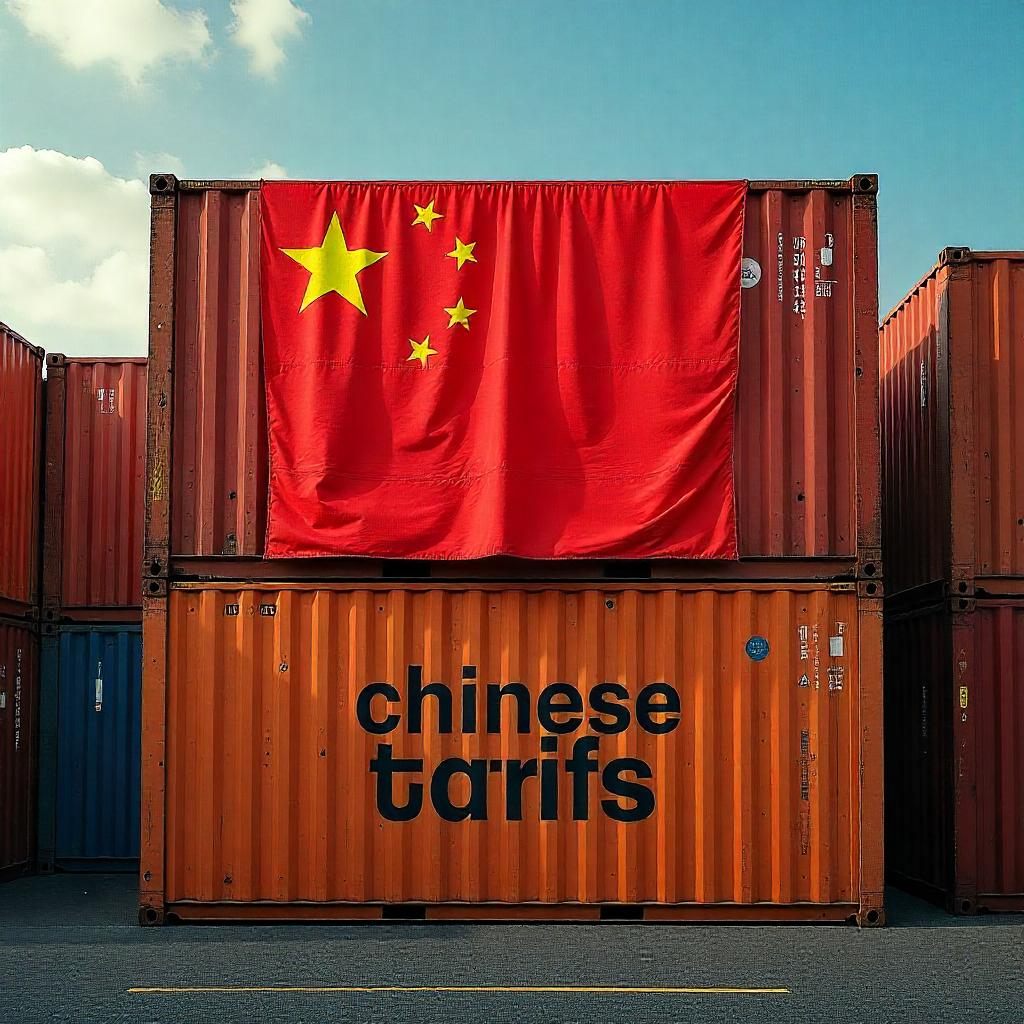Hook: In 2018, a soybean farmer in Iowa watched helplessly as prices plummeted overnight. China, his biggest buyer, had just slapped a 25% tariff on US crops. Fast forward to 2023, and the ripple effects of these Chinese tariffs still reverberate across industries, wallets, and policy debates.
The US-China trade war, ignited by tit-for-tat tariffs, has reshaped global commerce. But beyond the headlines, how do these policies truly impact American jobs, prices, and economic growth? Let’s unpack the untold stories and data driving this complex issue.

The Origins of the US-Chinese Tariffs War
A Timeline of Tensions
- 2018: The Trump administration imposes tariffs on $50 billion of Chinese goods under Section 301, citing unfair trade practices.
- 2019: Tariffs escalate, affecting $550 billion in Chinese imports. China responds with $185 billion in tariffs on US exports, escalating trade tensions.
- 2023: Most tariffs remain under Biden, despite debates over their efficacy (PIIE, 2023).
Why Tariffs?
The US imposed Chinese tariffs to shrink its $375 billion trade gap and combat IP theft, but critics warn they backfire, costing Americans more than they benefit (Brookings, 2022).
Impact on US Industries: Winners and Losers
🏭 Manufacturing: A Double-Edged Sword
- Pros: Steel and aluminum sectors saw a 15% production boost by 2020 (USITC, 2021).
- Cons: Machinery and electronics manufacturers faced a 10–20% cost surge due to imported Chinese components.
Case Study: Midwest Tool Co. shifted production to Mexico to bypass tariffs, saving $2M annually but cutting 100 US jobs.
🌾 Agriculture: collateral damage
- Soybean exports to China dropped 75% in 2018, costing farmers $14 billion (USDA, 2019).
- The US responded with $28 billion in farmer bailouts, a Band-Aid solution at best.
📱 Tech & Retail: Hidden Costs for Consumers
- Apple estimated a $7.5B hit from tariffs on Chinese-made iPhones, passing costs to consumers (CNBC, 2020).
- Price Surge: Average tariffs added $1,300 annually per household (Tax Foundation, 2022).
Macroeconomic Fallout: Inflation, Jobs, and Growth
📈 Inflation Nation
Tariffs contributed to a 0.5% rise in US inflation by 2021, exacerbating post-pandemic price spikes (Federal Reserve, 2022).
🏗️ Jobs: A Mixed Bag
- Losses: 300,000+ jobs vanished in agriculture and retail.
- Job Growth:** Tariffs sparked 12,000 new jobs in US steel and aluminum production
Net Effect: A 0.1% GDP dip by 2023, per Moody’s Analytics.
Global Repercussions: Supply Chains Unraveled
🌍 The Shift to “China +1”
Companies like Nike and Samsung diversified to Vietnam and India, reducing Chinese reliance by 18% (McKinsey, 2023).
Table: Tariff-Driven Supply Chain Shifts
| Industry | % Companies Relocating | Top Destinations |
|---|---|---|
| Electronics | 42% | Vietnam, Mexico |
| Apparel | 35% | Bangladesh, India |
How US Businesses Are Adapting to Chinese Tariffs
Business Innovations
- Reshoring: 3D printing cut costs for auto parts makers by 30%.
- Stockpiling: Retailers like Target hoarded Chinese goods pre-tariff deadlines.
Policy Moves
- Exclusion Process: 34,000 companies sought tariff exemptions, but only 7% succeeded (USTR, 2022).
Conclusion: Navigating the Tariff Maze
The Chinese tariffs saga underscores a harsh truth: protectionism often backfires. While some industries adapted, many Americans paid the price through job losses and higher costs. As trade tensions simmer, businesses must stay agile, and policymakers must weigh short-term gains against long-term stability.
Call to Action:
What’s your take? Have you felt the pinch of tariffs? Share your story below, and subscribe for our next deep dive on US-China Tech Rivalry.
Visual Elements Suggested:
- Infographic: US-China trade deficit before/after tariffs.
- Image: Port congestion in Los Angeles during peak tariff periods.
Internal Links:
External Links:
FAQs: Your Top Questions About Chinese Tariffs, Answered
1. “Understanding Tariffs: What They Are and How They Affect Trade?
Tariffs are taxes imposed on imported goods. When the US applies Chinese tariffs, it raises the cost of products imported from China. The goal is often to protect domestic industries or pressure trading partners to change policies. However, these costs typically trickle down to businesses and consumers. Learn more about tariff mechanics here.
2. How have Chinese tariffs directly impacted everyday US consumers?
Tariffs increased prices for common goods like electronics, clothing, and furniture. For example, a 2022 study found tariffs added $1,300 annually to household expenses. Items like washing machines saw prices jump 12% post-tariff (Forbes, 2021).
3. Have the tariffs been successful in bringing manufacturing back to the US?
Results are mixed. While steel and aluminum production rose, sectors like electronics struggled due to reliance on Chinese parts. Reshoring efforts grew by 15%, but many companies opted for cheaper alternatives like Mexico or Vietnam instead of returning to the US (Boston Consulting Group, 2023).
4. Why are the tariffs still in place under Biden?
Despite criticism, the Biden administration views tariffs as leverage in broader negotiations over China’s trade practices and intellectual property reforms. Some tariffs were eased in 2022 (e.g., solar panel parts), but most remain as strategic tools (Reuters, 2023).
5. Have Tariffs Helped Shrink the U.S. Trade Deficit with China??
Initially, the deficit dropped from $420 billion in 2018 to $345 billion in 2020. However, by 2022, it rebounded to $383 billion as trade rerouted through Vietnam and Mexico (US Census Bureau, 2023). Tariffs reshaped trade flows but didn’t eliminate imbalances.
6. How do small businesses survive amid higher tariff costs?
Many don’t. Small manufacturers and retailers face thinner margins, forcing cuts to jobs or innovation. Some pivoted to domestic suppliers, while others absorbed costs. Only 7% won tariff exclusions, leaving most to fend for themselves (NFIB, 2022).
7. Can Tariffs Escalate Tensions into a Broader U.S.-China Conflict?”
Economists warn that prolonged tariffs risk escalating into a “cold economic war,” with both sides investing in competing supply chains and tech decoupling. For now, diplomacy continues, but tensions over Taiwan and semiconductors loom large (CSIS, 2023).
8. What can I do to avoid tariff-related price hikes?
- Buy secondhand or refurbished goods (e.g., electronics).
- Support local businesses that source domestically.
- Stay informed about exemption updates via the USTR website.
Got more questions? Share Your Questions in the Comments—We’ll Cover Them in Our Upcoming Webinar: Navigating Global Trade in 2025




